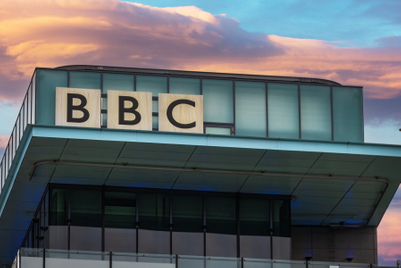
Mobile advertising may be underused and underpriced given the extent to which we live via our mobile devices (even when we're immobile on our sofas). But skyrocketing mobile usage, especially in Asia, cannot be ignored—at least not by two of the world's most popular news websites, CNN.com and BBC.com.
Both are moving to make their platforms more mobile-centric, confident that brands and ad dollars will follow. Through their actions and words, they paint an optimistic picture of a future where mobile advertising is not only easier for brands to buy but also more lucrative for media owners to sell.
CNN.com is on the cusp of debuting a site that's been rebuilt from the code-base up for a mobile-centric world, Kenneth "KC" Estenson, vice president and general manager of CNN Digital, told Campaign Asia-Pacific in the company's Hong Kong offices recently. In town in part to preview the new site to staff and clients, Estenson explained that the company had to scrap the software infrastructure that it has been using since 1996 in order to build a site that supports 'responsive design'. The term refers to a site that can resize and rearrange elements automatically to best suit whatever device the viewer is using to access it.
 |
"What we've seen is this tremendous change in consumption patterns, from desktop to mobile," Estenson said. In fact, 40 per cent of CNN.com's audience is now coming via mobile devices, up from 15 to 20 percent two years ago, and 25 per cent of all video is consumed on mobile, he added. India, Singapore and Japan are among the markets showing the largest growth in mobile usage.
"So we have huge mobile consumption, but the marketing money to follow that is yet to be there," Estenson admitted. "But we have to go to where consumers are and follow what consumer behaviour is telling us."
The BBC too has embraced responsive design, said Chris Davies, director of sales and marketing for BBC Global News, also in a recent interview in Hong Kong.
"The rise of mobile is enormous for us," Davies said. "It's driving a huge amount of additional traffic online. We hit a billion pageviews in August on BBC.com alone." Yet in terms of the user experience, the integration of advertising and monetising that traffic, "The industry has got to catch up with the audience," he allowed.
Both men said that part of the responsive-design ethos is making digital advertising, including mobile, less onerous for brands and agencies. As Estenson put it, "There's a lot of friction in the buying process for mobile right now, and I think the goal is to try to remove that as best we can."
 Chris Davies |
"What's interesting as a challenge is that people are taking desktop advertising and trying to force it onto mobile," Davies said. "So things like wallpaper ads—that's not the answer, because it wasn't designed for anything but a desktop screen. We have to find something new, but not too onerous on the creative people so they don't have to create so many versions."
Responsive design should put that goal within reach. Estenson, for example, showed a clever implementation where a standard-size ad unit was designed to look like part of a much larger wallpaper image when viewed at a desktop size, but stood on its own when the viewscreen was reduced to a mobile size and the background image disappeared.
Will money follow?
Whether the changes these sites are making will drive an increase in pricing power for mobile advertising, compared with today's massive buying of cheap online advertising, remains to be seen. Both men expressed confidence that it will, which may not be surprising given that they badly need it to do so in order for the economics of running global news organisations to work out.
"Historically, media companies have charged based on the size and the glossiness of the ad execution, as opposed to the targeting and the accuracy of the execution," Estenson said. "Mobile is more about targeting, more about either finding somebody geographically or finding somebody in the right psychographic."
Given an affluent, global audience, advertising dollars will come as companies like Facebook and Google put effort into selling mobile and as agencies systematise the creation and buying process for mobile ads, he continued.
"The tradeoff is screen size and real estate. It's obviously not a high-def experience like you get with TV, but it's a highly targeted one. And with targeting, the pricing can go up, and as the creative gets better and the executions get better, then I think the market will come to it."
 Mockups from CNN illustrate how a responsive design resizes for tablets and mobiles. |
At the same time, both BBC and CNN see possibilities in their large social-media followings, and in their ability to give brands attractive sponsored-content or 'native' advertising spots.
"We see an increasing desire to work more closely with content, to make sure the ad isn't obtrusive but looks like it's wrapped around the content," Davies said. Although separation of 'church and state' remains inviolate, "where we can sponsor programming, where we can talk to clients and come up with something that feels like it’s a natural fit with the content, that's where clients get particularly interested."
More brands are coming to the table with their own content already prepared, said Estenson, who also showed how the new CNN site will use bands of color to elegantly present such content alongside but apart from editorial.
"We're actively asking for brand marketers who want to do innovative work in multiplatform to come to us and let us work with them on trying to do some things that are very innovative," he said. "We want to prove out this theory that this audience that's consuming us in these ways will work for advertisers who want to do very forward-leaning work."



.jpg&h=334&w=500&q=100&v=20250320&c=1)

.jpg&h=334&w=500&q=100&v=20250320&c=1)
.jpg&h=334&w=500&q=100&v=20250320&c=1)

.jpg&h=334&w=500&q=100&v=20250320&c=1)
.jpg&h=334&w=500&q=100&v=20250320&c=1)
.jpg&h=334&w=500&q=100&v=20250320&c=1)



.jpg&h=268&w=401&q=100&v=20250320&c=1)

+(900+x+600+px).png&h=268&w=401&q=100&v=20250320&c=1)

+(900+x+600+px).jpg&h=268&w=401&q=100&v=20250320&c=1)
